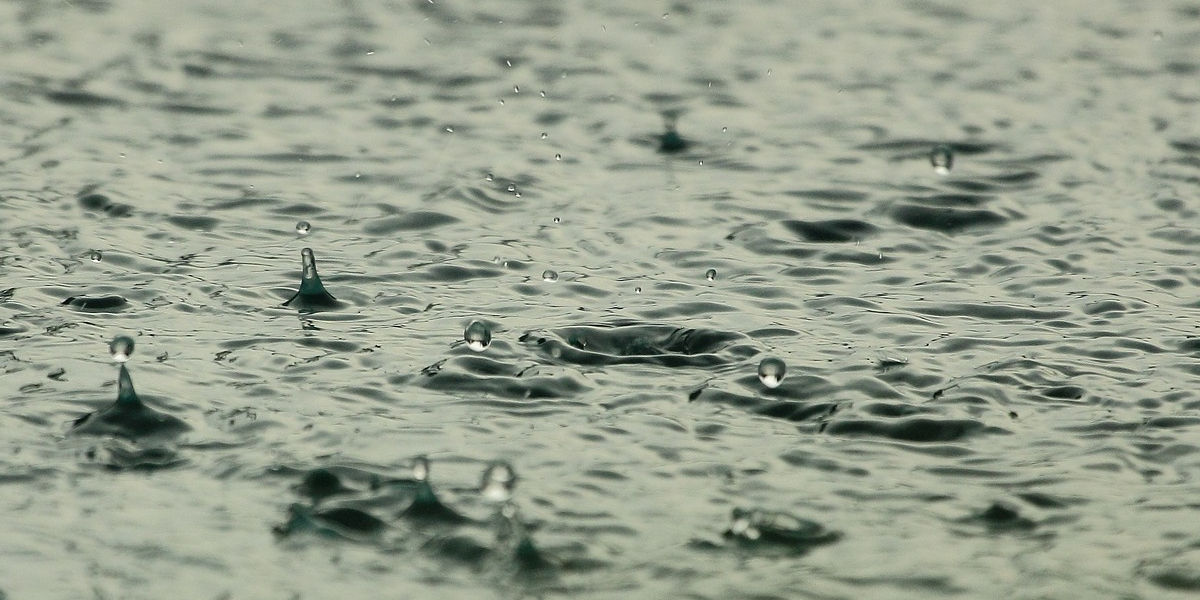Infinity encased in a moment, an epic tale of adventure, survival, and transformation - that is what defines the life of a raindrop! In almost every living creatureís life, it plays a vital role yet goes unnoticed most of the time. Today, we delve into the marvelous journey of an ordinary raindrop, bring light to its tiny world and answer some intriguing questions - How long does a raindrop fall? What happens when it reaches the ground? Buckle up, as we navigate "The Life of a Raindrop" and get the "Water Cycle Explained".
The Birth of a Raindrop: Evaporation in Action
Every raindrop starts life as a particle of water, lifted from earth's surface by the magnificent process of evaporation. Sun's energy heats up water on the surface, giving the particles enough speed to break free from the surface and ascend into the atmosphere as water vapor. The invisible water vapor rises upwards, leaving water bodies, plants, soil, and yes, even you! This happens everywhere around the world, from the vast, blue oceans to your little cup of tea! As every journey starts with a single step, every single raindrop's saga commences here.
From Vapor to Droplet: The Science of Condensation
The ascent continues until each vapor molecule reaches cooler layers of the atmosphere. It's here that they begin to lose their energy, slowing down and coming closer together. This transformation from water vapor to liquid state is known as condensation. As water vapor cools down, countless tiny droplets unite to form clouds, the cradle of our raindrop. This process is similar to the dew you find on grass on cool mornings or the droplets on your cold soda can on a hot dayñ the water cycle explained in the palm of your hand!
The Fall: How Long Does a Raindrop Fall?
A raindrop's time in the cloud is a turbulent one. Bouncing around, colliding with other drops and accumulating more water - it grows heavier over time. When it finally becomes too heavy for the winds to hold up in the cloud, it starts its exciting and rapid descent back to Earth ñ it starts to rain.
This free fall, though appears fleeting to us, is a significant part of a raindrop's life. The time it takes for a raindrop to hit the ground depends mainly on its size and the wind's speed. A smaller drop may take up to 7 minutes, while a larger one plummets in about 4 minutes. Predominantly, the journey from cloud to ground, answering "how long does a raindrop fall?" spans only a few minutes.
From Clouds to Earth
When we left off, our intrepid hero, the humble raindrop, had just been formed within a cloud in the sky, carried aloft by the winds and temperature changes. Now, it's time for our raindrop to make its triumphant descent back to the planet's surface.
As previously mentioned, this journey is largely dependent on the weather patterns and environmental factors at work. Once raindrops have grown to about .02 inches in diameter, they begin to fall towards the earth due to gravity. Whether these drops will reach the ground or evaporate mid-air depends on a variety of conditions, such as temperature, humidity, and wind.
The Impact on Earth
Assuming our raindrop makes it to the ground, what happens next is reliant on where it lands. If our raindrop lands on a plant, for example, it may be absorbed and used for photosynthesis, eventually being released back into the atmosphere as water vapor. If it hits a body of water, it will merge with that water and can later evaporate to start the cycle once more or flow downstream to reach the ocean eventually. If it lands on non-porous ground, it could become run-off, eventually finding its way into a river or stream.
From Earth Back to the Sky
Once on the ground, our raindrop isn't done journeying. It might find itself transported via a river to the sea. From the water's surface, it can again become a gas in a process called 'evaporation'. Powered by the energy from the sun, the water droplet can change into water vapor, and the rise will bring it back up into the atmosphere.
In some cases, our drop may become part of groundwater, seeping into the earth until it hits hard rock. It could sit in the darkness for years or centuries, or it could be drawn up by a plant or reintroduced to a body of water or even become part of a drinking water system. Every drop's journey is unique!
The Continuation of the Cycle
Irrespective of where its journey leads, our tireless drop never really finishes its voyage. From our atmosphere to the ground and back again, each water droplet is continually on a journey, repeating the water cycleóan unending, epic saga that allows life on Earth to exist and flourish.
While we've tracked one raindrop here, it's noteworthy to remember that the process is happening continuously all around us with millions and billions of water droplets, all partaking in the same, global natural process.
Conclusion
So, the next time you see a raindrop fall from the sky, spare a thought for its journey. Each drop has an adventure of its own, traveling through states of matter, through the atmosphere, and across the earth. It is an integral part of the story of life on Earth. We're simply privileged to witness a moment of its extraordinary journey.




